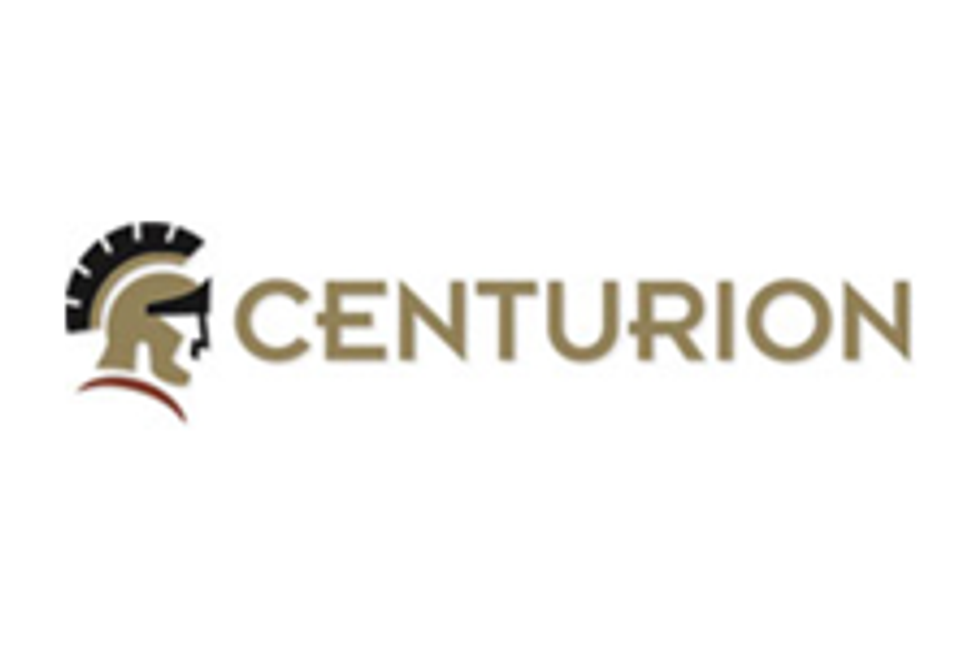What are Intrusion-related Gold Systems? (Updated 2025)
Intrusion-related gold systems are an important source of gold, and for that reason are attractive targets for gold companies around the world.

Gold is considered an important part of any investment portfolio, and gold stocks can offer investors exposure to the market without needing to actually hold any physical gold. But investing in gold-focused companies requires due diligence, as well as an understanding of the factors that can bring these entities success.
Understanding gold deposit types is one place to start. Given their reputation for containing high-grade gold, most investors will have heard of Carlin-style gold deposits; however, they may not be familiar with intrusion-related gold systems. These gold deposits are lower grade, but their large tonnage makes them some of the most productive assets in the world. That means they can be highly attractive prospects for gold-focused companies.
Intrusion-related gold systems were first identified more than three decades ago, and in the time since then their defining characteristics have been debated by geologists. This has led to the acceptance of an important distinction between oxidized intrusion-related gold deposits and reduced intrusion-related gold deposits; even so, the reclassification of some deposits as intrusion-related remains controversial among experts.
Today, intrusion-related gold deposits are being targeted by numerous gold companies in prime mining jurisdictions, including Australia, the US and Canada. Here the Investing News Network takes a deeper dive into intrusion-related deposit types, and looks at some of the gold companies working to unlock their potential gold production.
What is an oxidized intrusion-related gold deposit?
Oxidized intrusion-related gold deposits are hosted in a stockwork of quartz veinlets occurring within oxidized porphyry stocks in magmatic arcs. Copper-rich skarns and high-sulfidation epithermal systems are also found near these porphyry intrusions.
“The oxidized intrusion-related gold systems are all directly associated with porphyry copper systems in one way or another, so their tectonic settings are the same,” according to Chris Ralph, mining engineer and associate editor at the ICMJ Prospecting and Mining Journal. The gold-copper ratios in intrusion-related gold deposits can vary widely.
These polymetallic deposit types are found in gold-rich zones in the Australian provinces of Victoria, Queensland and New South Wales, as well as Canada’s Abitibi Greenstone Belt, which crosses the provinces of Ontario and Québec. As for mines and projects in these zones, Australian examples include the former Kidston and Red Dome gold mines in Queensland, and Abitibi examples include IAMGOLD’s (TSX:IMG,NYSE:IAG) Côté gold-copper deposit and Agnico Eagle's (TSX:AEM,NYSE:AEM) Macassa gold mine. Both demonstrate that these systems can host economically significant gold mineralization.
Oxidized intrusion-related gold exploration projects
- Antler Gold (TSXV:ANTL) owns the Paresis gold project in North-central Namibia, which is located within the gold corridor in the northern region of the country that hosts B2Gold’s (TSX:BTO,NYSEAMERICAN:BTG) Otjikoto gold operations. Antler commenced its exploration program at the project in early 2024 and is seeking partners.
- Kenorland Minerals (TSXV:KLD,OTCQX:KLDCF) and partner Sumitomo Metal Mining Canada discovered the Regnault intrusion-related gold system at the Frotet gold project in Northern Québec in 2020. The subsidiary of Sumitomo Metal Mining (TSE:5713) now owns 100 percent of the project and Kenorland holds a 4 percent net smelter return royalty. In November 2024, Kenorland reported results from its 2024 summer exploration program at Frotet.
- PJX Resources (TSXV:PJX,OTCQB:PJXRF) owns the Dewdney Trail property in the Sullivan mining district of Southeast British Columbia, Canada. Its Estella Basin target has the potential for intrusion-related gold-copper-silver-molybdenum mineralization, and its Tackle Basin target also has potential for intrusion-related gold.
- Red Pine Exploration's (TSXV:RPX,OTCQB:RDEXF) Ontario-based Wawa gold project hosts a large intrustion-related gold system, which the company has been exploring. The mineralization associated with this intrusion-related gold system can be traced over 6 kilometers of confirmed strike. In late 2024, Red Pine announced the discovery of a new zone of gold mineralization in the Hornblende Shear at Wawa that "corresponds to overprinting orogenic mineralization on older intrusion-related gold zones."
What is a reduced intrusion-related gold deposit?
The terms “reduced” and “intrusion” in this deposit type’s moniker relate to the existence of “reduced granitic intrusions ... characterized by large zones of parallel, sheeted, gold-bearing quartz veins and veinlets,” as per ICMJ's Ralph.
It’s the size of this sheeted zone that determines whether or not a bulk-tonnage, low-grade gold deposit will form. Such a deposit can be mined by open-pit methods. The sheeted vein systems typically host coarse gold, which when eroded by local streams can generate placer deposits. In addition, tin and tungsten deposits may be found in the same geological setting.
The Tintina Gold Belt that covers the northern portion of the North American Cordillera is a favorable geological address for reduced intrusion-related gold deposits. Ralph pointed to Barrick Gold (TSX:ABX,NYSE:GOLD) and NovaGold’s (TSXV:NG,NYSEAMERICAN:NG) Donlin asset, Kinross Gold's (TSX:K,NYSE:KGC) Fort Knox property in Alaska and the Dublin Gulch intrusion in Canada's Yukon territory as prime examples. “The huge Donlin Creek deposit in Alaska was a small, moderately productive placer area until the huge hard rock deposits adjoining them were recognized,” he stated.
The Tombstone Gold Belt that spans from Alaska through the Yukon into the Northwest Territories is another prominent region for companies hunting for reduced intrusion-related gold.
Reduced intrusion-related gold exploration projects
- Rackla Metals (TSXV:RAK) is exploring for reduced intrusion-related gold systems in the Tombstone Gold Belt, with properties in both the Yukon and Northwest Territories, Canada. Its 2024 exploration at its new Grad property in the Northwest Territories led to the discovery of the BiTe showing, which it plans to focus on in 2025. According to the company, Grad "is shaping up to be an outstanding Reduced Intrusion-related Gold System target."
- Sitka Gold’s (CSE:SIG,OTCQB:SITKF) RC gold project in the Yukon’s Tombstone Gold Belt has multiple intrusion-related gold deposit targets, including the Blackjack deposit and the Rhosgobel instrusion. Rhosgobel is hosted within the Clear Creek Intrusive Complex, which the company believes could host multiple gold deposits. Sitka's first-ever diamond drill holes at the Rhosgobel intrusion returned high-grade results, confirming that gold mineralization extends to at least 300 meters depth and is open laterally.
- Snowline Gold (CSE:SGD,OTCQB:SNWGF) has a number of Yukon-based projects with reduced intrusion-related gold systems, including its Rogue gold project in the Mayo Mining District. The company released an initial mineral resource estimate for Rogue's bulk-tonnage-style Valley target in June 2024, and stated the resource establishes Valley as a "significant, continuous near-surface gold deposit with ... unusually high grades for a reduced intrusion-related gold system."
- Trailbreaker Resources (TSXV:TBK,OTC Pink:APRAF) recently added the Sheldon property in the Yukon’s Tombstone Gold Belt to its portfolio; it hosts what the company calls "reduced intrusion-related gold system style mineralization." Trailbreaker is also exploring intrusion-related gold systems at its Eakin Creek and Gold Sable properties.
- Trifecta Gold (TSXV:TG,OTCQB:TRRFF) has identified a promising reduced intrusion-related gold target at the Mt. Hinton project in the Yukon's Tombstone Gold Belt. In late 2024, results from a 3D inversion of geophysical survey data revealed a strong resistivity anomaly at the GC target that extends over 3 kilometers, and suggest the presence of a buried intrusion potentially driving mineralization in the area.
This is an updated version of an article originally published by the Investing News Network in 2015.
Don’t forget to follow us @INN_Resource for real-time news updates!
Securities Disclosure: I, Giann Liguid, hold no direct investment interest in any company mentioned in this article.
- Indicator Minerals in Gold Exploration (Updated 2024) ›
- Gold Grain Morphology: A Valuable Method of Gold Exploration ›
- Gold Deposits: The Quartz-Pebble Conglomerates ›
- An Overview of Epithermal Gold Deposits ›
- What Makes a World-class Gold Deposit? (Updated 2024) ›





